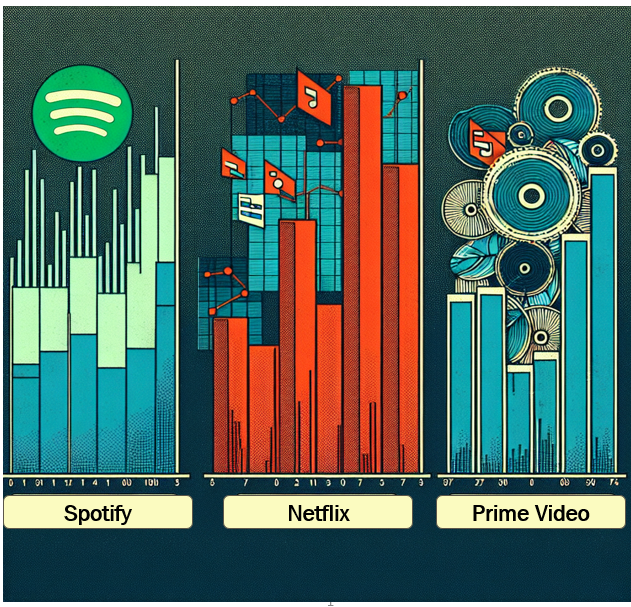Embracing Vector Databases: Unlocking the Potential of Intelligent Data Solutions
In the pursuit of digital transformation, modern businesses are constantly seeking innovative ways to harness and interpret the vast, complex data at their disposal. Enter vector databases: the vanguard technology that revolutionizes how we store, index, and query information. Imagine a system designed not just to manage data, but to comprehend and link it intuitively—and you're beginning to glimpse the promise of vector databases.
Unlike traditional databases that rely on rigid rows and columns, vector databases thrive in the realm of high-dimensional vectors. These numerical arrays can encode the essence of complex data types, such as text, images, and audio. By clustering these vectors according to semantic similarity, vector databases enable rapid and insightful retrieval of information. This leap from keyword-matching to semantic understanding empowers businesses to perform searches that resonate with human language and perception.
Consider an e-commerce platform that not only identifies product matches based on keywords like "phone" but anticipates consumer intent by surfacing relevant alternatives such as "smartphone" or conceptually related images. This ability to conduct nuanced similarity searches is transforming user experiences, powering advanced features like semantic search and personalized recommendations.
As artificial intelligence continues to redefine the competitive landscape, the demand for databases that support semantic understanding and intelligent data querying is surging. Vector databases fill this critical gap, facilitating the seamless integration of AI and machine learning to deliver insights that were previously beyond reach.
This document serves as a guide to navigating this transformative technology. It offers a practical overview of vector databases, detailing their applications, inner workings, and the tools available to leverage them effectively. As we delve into the world of vector databases, prepare to unleash the full potential of your data and redefine how your organization thinks about information retrieval and analysis.
Core Concepts: Unlocking the Power of Vector Databases
Embeddings - Embeddings serve as the backbone of vector databases, transforming raw inputs—whether text, images, or more—into numerical vectors that encapsulate semantic meaning. For instance, phrases like “cat on a mat” and “kitten on a rug” are converted into vectors that cluster closely in a high-dimensional space, thanks to the underlying machine learning models. This capability enables the database to work at a level beyond raw data, focusing on the semantic relationships between items.
Similarity Search (Nearest-Neighbor Search) - At the heart of vector databases is the ability to perform similarity searches efficiently. When a user query is converted into a vector, the database employs sophisticated algorithms to quickly identify the top k-nearest vectors in the dataset. This involves calculating distances using various metrics to find results like “similar documents” or “related product recommendations.” The strength of similarity search lies in its efficiency, achieved through advanced indexing techniques that eliminate the need for cumbersome brute-force comparisons.
Indexing - Indexing is the secret sauce that accelerates vector search by streamlining data access. Techniques like Hierarchical Navigable Small World (HNSW) create a multi-layered network for rapid navigation through data, while Inverted File systems (IVF) cluster vectors to minimize search efforts. Product Quantization (PQ) compresses data, optimizing it for memory use, and Locality-Sensitive Hashing (LSH) offers swift searches through hashing methods. Each method brings a unique balance of speed, memory efficiency, and accuracy, allowing vector databases to be tailored for specific business needs, from high-speed data retrieval to handling massive datasets with precision.
Optimizing Vector Closeness: Efficient Distance Metrics for Your Needs
In the world of vector databases, choosing the right distance metric is crucial for measuring how similar or "close" data points are. Each metric offers unique advantages suited to different applications:
Euclidean Distance (L2): Think of this as the straight-line distance between data points—effective but sensitive to variations in scale.
Cosine Similarity: This metric shines for text data, focusing on the orientation rather than the size of vectors, making it ideal for comparing content regardless of length.
Dot Product: Useful when working with unnormalized embeddings; it's a simpler approach related to cosine when vectors are normalized.
Manhattan Distance (L1): Faster in computation for very high-dimensional spaces; it calculates the sum of absolute differences between data points.
Hamming Distance: Tailored for binary vectors, this counts differing bits making it suitable for certain hashing scenarios.
Jaccard Distance: Perfect for measuring overlap in sets or binary data.
Selecting the right metric depends on your specific embedding model and case requirements. Vector databases generally support multiple metrics, allowing you to tailor your index and query processes for optimal performance.
Vector Databases + Large Language Models: Elevating RAG Systems
In the rapidly evolving landscape of artificial intelligence, vector databases are revolutionizing the way large language models (LLMs) like GPT-4 leverage external data. This synergy powers Retrieval-Augmented Generation (RAG), which significantly enhances LLM capabilities by enabling real-time access to expansive knowledge bases—without the need for retraining.
RAG Workflow: A Seamless Integration Process
Chunk Documents: Begin by segmenting documents into smaller, contextually meaningful units such as paragraphs. This fragmentation allows for finer granularity in data retrieval.
Embed Chunks: Utilize advanced models from OpenAI, Cohere, or Sentence Transformers to transform these segments into high-dimensional vectors that encapsulate semantic meaning.
Store in Vector Database: Deposit these vectors, complete with metadata and document references, into a vector database. This step is crucial for maintaining an organized, searchable repository.
Query User Input: Convert the user's question into a comparable vector form, setting the stage for a precise search within the database.
Search Vector Database: Execute a search to pinpoint the top-k most semantically aligned document segments. This swift retrieval ensures relevance and timeliness.
Inject into LLM Prompt: Seamlessly integrate the retrieved data chunks into the LLM's prompt as dynamic context, enriching its foundational knowledge.
Generate Response: Armed with this up-to-date and context-specific information, the LLM crafts a comprehensive and accurate response.
By addressing the inherent limitation of LLMs' static knowledge bases, vector databases enable flexible and current information injection. This not only enriches the LLM’s responses but also opens up pathways to deliver domain-specific insights with unprecedented precision and relevance. Through this collaborative framework, businesses and technologies can unlock new levels of artificial intelligence utility, bringing real-time, augmented intelligence to the forefront of digital innovation.
Real-World Applications: Transforming Industries with Vector Databases
The transformative power of vector databases is being harnessed across various industries, driving innovation and enhancing operational efficiency through precise data insights.
- E-commerce: Leading platforms like Amazon utilize vector search technology to enhance customer experiences through personalized product recommendations. By analyzing product descriptions, user behavior, and reviews, Amazon delivers highly relevant suggestions that align with each shopper's unique interests, thereby increasing customer satisfaction and sales conversion rates.
- Media and Entertainment: Spotify employs its proprietary tool, Annoy, to harness audio embeddings for curating personalized playlists. By analyzing the sonic properties of songs, Spotify can recommend tracks that align with a user's listening preferences, enhancing user engagement and music discovery.
- Healthcare: In the medical field, vector databases power semantic searches on platforms like PubMed. Clinicians and researchers can access relevant scientific studies efficiently, aligning patient treatment plans with the latest evidence-based findings and improving patient outcomes.
- Legal and Compliance: Law firms leverage the capabilities of vector search to identify precedent cases with exhaustive relevance. This technology transcends traditional keyword matching, enabling attorneys to unearth semantically similar cases with varying terminologies, thus streamlining legal research and strengthening case strategies.
- Education: Intelligent tutoring systems utilize vector databases to assess students' progress and recommend tailored learning resources. This personalized approach adapts content delivery based on individual learning paths, increasing engagement and improving educational outcomes.
These real-world applications illustrate the versatility of vector databases in solving complex challenges across diverse sectors. By enabling more profound insights and personalized experiences, vector databases are not just enhancing operations—they are redefining how industries interact with data.
Traditional vs Vector Databases
| Feature | Traditional DB (SQL/NoSQL) | Vector Database |
| Data Type | Structured (tables, JSON) | High-dimensional vectors |
| Query Type | Exact match, filters | Similarity (nearest neighbor) |
| Use Case | Transactions, analytics | Semantic search, recommendations |
| Indexing | B-trees, Hash indexes | HNSW, IVF, PQ, LSH |
| Example Query | Find user by ID | Find similar documents/images |
Leading Vector Database Tools: A Strategic Overview
FAISS (Facebook AI Similarity Search) Developed by Meta, FAISS is a high-performance open-source library designed for those who need lightning-fast similarity search capabilities. It's a toolkit rather than a comprehensive database, excelling in speed and efficiency, especially when paired with powerful hardware like GPUs. This makes FAISS ideal for developers seeking raw computational speed for large datasets. However, it's worth noting that FAISS requires integration into existing systems to handle data persistence and replication, positioning it as a perfect fit for tech-savvy teams comfortable crafting custom solutions.
Pinecone Aimed at simplifying the complexities of vector database management, Pinecone offers a fully managed cloud service that takes care of indexing, scaling, and replication. Its easy-to-use API abstracts the intricacies of server management, making it an excellent choice for businesses seeking reliability without the overhead of maintaining infrastructure. While it comes with a price tag, Pinecone is invaluable for production environments where uptime and seamless scaling are non-negotiable.
Weaviate Weaviate sets itself apart by combining vector storage with semantic search capabilities, all packaged in an open-source platform. Featuring a GraphQL interface and hybrid query support, Weaviate offers flexible deployment options—self-hosted or cloud-based. It easily integrates with AI and machine learning models, allowing for automatic embedding generation. For organizations looking to leverage both semantic understanding and vector search, Weaviate provides a versatile and feature-rich solution.
Other Noteworthy Tools Beyond FAISS, Pinecone, and Weaviate, the landscape includes tools like Milvus, which is open-source and cloud-friendly, Annoy from Spotify for approximate searches, and Chroma, a Python-based open-source database. Each tool caters to specific needs, from the unparalleled single-machine speed of FAISS, to the managed cloud convenience of Pinecone, and the hybrid capabilities of Weaviate, illustrating the breadth of solutions available to meet diverse business demands
| Tool | Type | Highlights |
| FAISS | Local (C++/Python) | Blazing-fast, ideal for prototyping |
| Pinecone | Cloud SaaS | Scalable, LLM-ready, metadata-rich |
| Weaviate | Hybrid | Open-source + vectorizers + GraphQL |
| Milvus | Open-source | GPU acceleration, supports billion-scale |
| Qdrant | Open-source | Rust backend, filtering, payload search |
| Vespa | Enterprise-grade | Vector + keyword + ML in one |
| Redis | Plugin support | Lightweight vector capabilities via Redis |
Beginner-Friendly Python Code Examples
🔷 FAISS (Local, Open Source)
import faiss
import numpy as np
# Step 1: Create document vectors
document_vectors = np.array([
[0.1, 0.2, 0.3], # "cat"
[0.2, 0.1, 0.4], # "dog"
[0.9, 0.8, 0.7] # "car"
], dtype='float32')
document_ids = np.array([101, 102, 103], dtype='int64')
# Step 2: Build index with ID mapping
index = faiss.IndexFlatL2(3) # L2 distance, 3D vectors
id_index = faiss.IndexIDMap(index)
id_index.add_with_ids(document_vectors, document_ids)
# Step 3: Query similar vectors
query_vector = np.array([[0.15, 0.15, 0.35]], dtype='float32')
distances, indices = id_index.search(query_vector, k=2)
# Step 4: Display results
id_to_name = {101: "cat", 102: "dog", 103: "car"}
print("Top matches:", [id_to_name[i] for i in indices[0]], "→", distances[0])🔷 Pinecone (Managed, Cloud)
import pinecone
pinecone.init(api_key="YOUR_API_KEY", environment="us-west1-gcp")
index_name = "quickstart"
if index_name not in pinecone.list_indexes():
pinecone.create_index(index_name, dimension=3, metric="cosine")
index = pinecone.Index(index_name)
# Upsert vectors
vectors = [
("cat", [0.1, 0.2, 0.3], {"type": "animal"}),
("dog", [0.2, 0.1, 0.4], {"type": "animal"}),
("car", [0.9, 0.8, 0.7], {"type": "vehicle"}),
]
index.upsert(vectors=vectors)
# Query
query = [0.15, 0.15, 0.35]
results = index.query(queries=[query], top_k=2, include_metadata=True)
for match in results['results'][0]['matches']:
print(f"ID: {match['id']}, Score: {match['score']}, Meta: {match['metadata']}")
🔷 Weaviate (Self-hosted / Hybrid Cloud)
import weaviate
client = weaviate.Client("http://localhost:8080")
# Define schema
class_schema = {
"class": "AnimalDoc",
"vectorizer": "none",
"properties": [{"name": "label", "dataType": ["text"]}]
}
try:
client.schema.create_class(class_schema)
except weaviate.exceptions.SchemaValidationException:
pass
# Insert with vectors
cat = {"label": "cat"}
dog = {"label": "dog"}
client.data_object.create(data_object=cat, class_name="AnimalDoc", vector=[0.1, 0.2, 0.3])
client.data_object.create(data_object=dog, class_name="AnimalDoc", vector=[0.2, 0.1, 0.4])
# Search
query_vec = [0.15, 0.15, 0.35]
result = client.query.get("AnimalDoc", ["label"]).with_near_vector({"vector": query_vec}).with_limit(2).do()
for obj in result["data"]["Get"]["AnimalDoc"]:
print("Match:", obj["label"])
Future Trajectory of Vector Databases: Strategic Considerations
1. Expansion into Multi-Modal and Hybrid Systems
As data becomes increasingly diverse in format, vector databases are poised to evolve into comprehensive multi-modal systems. This trajectory involves integrating text, image, audio, and video data into unified frameworks. Anticipate a future where hybrid search techniques, combining traditional keyword and advanced vector-based methods, become essential to enhancing retrieval accuracy and contextual relevance across disparate data types.
2. Scalability and Real-Time Processing Enhancements
With the exponential growth of data, vector databases must continually refine their scalability and efficiency. Future innovations will likely focus on optimizing architectures for real-time processing and retrieval, supporting sharding, replication, and advanced hardware acceleration, including GPU and TPU integration. This evolution is crucial for meeting the demands of applications requiring instantaneous query responses and constant data updates.
3. Integration with AI and ML for Intelligent Applications
The future of vector databases is intricately linked to the progression of artificial intelligence and machine learning. These systems are expected to become deeply embedded in intelligent applications, facilitating seamless integration with state-of-the-art language models and machine learning frameworks. This synergy will drive new capabilities in automated reasoning, context-aware computing, and dynamic data-driven decision-making, opening pathways to unprecedented insights and user experiences.
Persistent Memory Across Users
As AI systems become more interactive and context-aware, it is essential to remember user-specific inputs across sessions. This allows systems to build and retrieve a long-term memory for individual users, creating a continuous and personalized experience. Vector databases provide the core infrastructure for this capability by enabling the storage and retrieval of conversational history and user preferences as semantic embeddings.
To achieve this, each piece of user-specific context—such as preferences, previous queries, or key details from conversations—is converted into an embedding and stored with a unique user or session ID as metadata. This strategy allows the system to filter the vector space and search only within a specific user's data, ensuring that the retrieved context is relevant to them alone. When a user interacts with the system again, their new input is used to query their historical embeddings, retrieving the most relevant past interactions to inform the AI's response.
Managing this memory over time involves several key strategies. New information is simply appended by creating new embeddings tagged with the user's ID. For long-term memory spanning weeks or months, a summarization or compaction process can be implemented. This involves periodically reviewing a user's older embeddings and creating a new, consolidated "memory" embedding that captures the key themes of past interactions. To manage data responsibly, memory retention policies can be enforced using the metadata filters. For example, a system could automatically delete embeddings older than a specified period (e.g., 90 days) by filtering for a timestamp in the metadata, ensuring compliance with privacy standards and optimizing storage.
Storing Large Unstructured Data for Effective RAG
Vector databases are most powerful when handling complex, unstructured data like documents, logs, transcripts, or multimedia. For Retrieval-Augmented Generation (RAG) to work effectively, this data must be pre-processed, chunked, embedded, and stored in a way that enables precise, semantic retrieval.
The first critical step is chunking, or breaking down large files into smaller, semantically coherent segments. The chosen technique directly impacts retrieval quality. Simple fixed-size chunking can be effective but often splits text awkwardly. More advanced methods like recursive character text splitting break down documents based on logical separators (paragraphs, sentences), creating more meaningful chunks. For dense information, an overlap strategy—where adjacent chunks share some content—helps preserve context that would otherwise be lost at the edges. For varied document types, adaptive splitting techniques can analyse the structure of a file (e.g., Markdown headers, HTML tags) to create chunks that align with the document's inherent organization.
Once chunked, the data moves through an embedding pipeline. Best practices here are crucial for efficiency and scale. Batch processing is ideal for initial data ingestion, where large volumes of documents are converted into embeddings simultaneously. For real-time updates, streaming ingestion pipelines ensure that new or modified data is immediately available for search. Caching strategies can be employed to store embeddings for frequently accessed documents, reducing redundant processing and speeding up retrieval.
Finally, preserving the relationship between chunks and their source is vital for reconstructing meaningful context. This is achieved by storing rich metadata alongside each vector. This metadata should include the source reference (e.g., document name, page number) and the chunk's position within the original file. For complex documents, cross-chunk relationships can be encoded by storing pointers to the previous and next chunks. This allows the RAG system not only to retrieve the most relevant chunk but also to pull in surrounding chunks to provide the LLM with a more complete and coherent context for generating its response.
Featured Blogs

TRENDS 2024: Decoding India’s Zeitgeist: Key Themes, Implications & Future Outlook

How to better quantify attention in TV and Print in India

AI in media agencies: Transforming data into actionable insights for strategic growth

How the Attention Recession Is Changing Marketing

The New Luxury Why Consumers Now Value Scarcity Over Status

The Psychology Behind Buy Now Pay later

The Rise of Dark Social and Its Impact on Marketing Measurement

The Role of Dark Patterns in Digital Marketing and Ethical Concerns

The Future of Retail Media Networks and What Marketers Should Know
Recent Blogs

Trending Topics of The Week (2nd December – 8th December)

Trending Topics of The Week (25th November – 1st December)

Trending Topics of The Week (18th November – 24th November)

Trending Topics of The Week (11th November – 17th November)

Trending Topics of The Week (4th November – 10th November)


